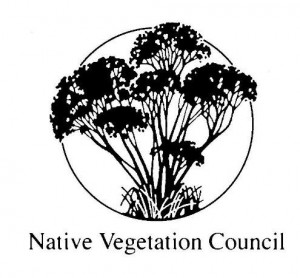The restoration of Mt Burr Swamp – Six month update
For the first time since it was drained decades ago, Mt Burr Swamp will hold water through the autumn months until the coming winter – which is absolutely fantastic news. While obviously the wet spring last year provided us with the welcome rainfall we needed to kick start the project, the restoration structure on the outlet drain is the key reason we’ve been able to sustain the water levels in the swamp you can see today.
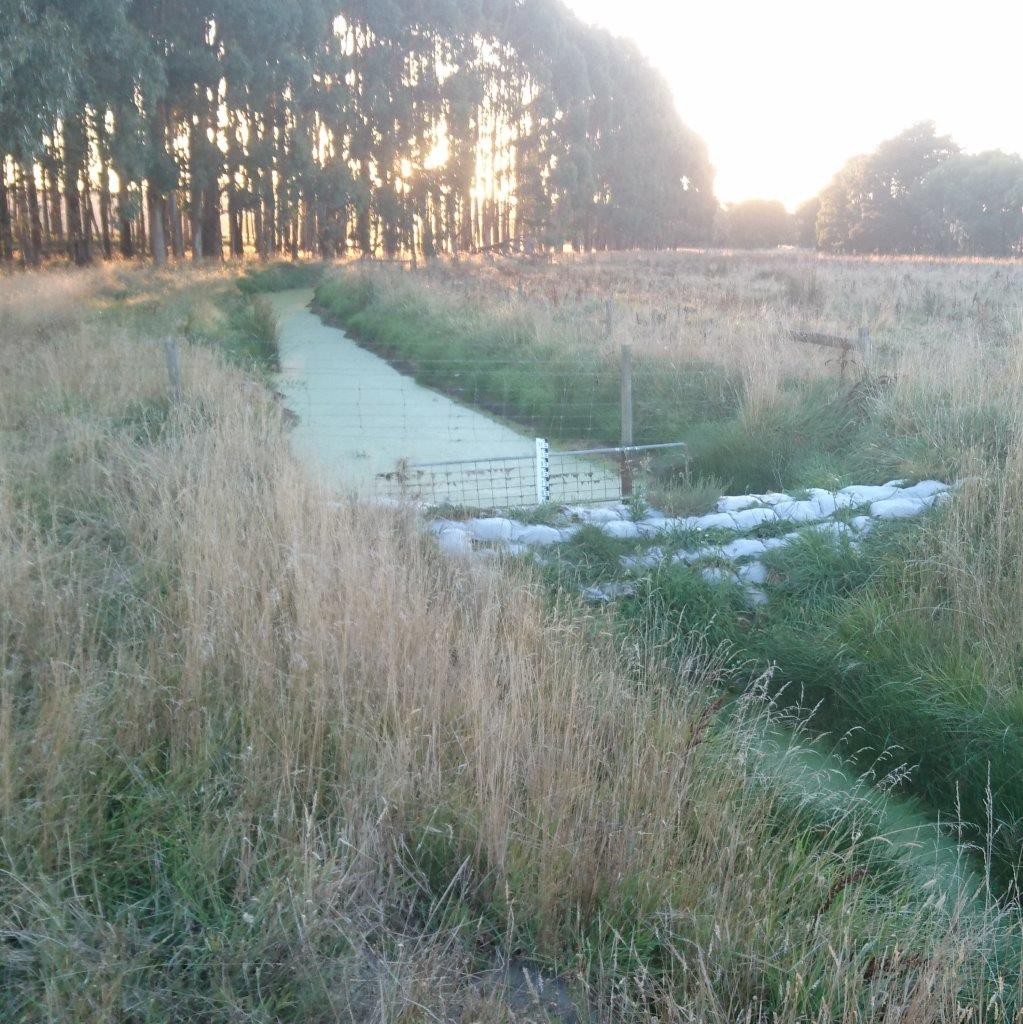
The Mt Burr Swamp restoration structure – still holding back water in autumn. Note the water is obscured by Duckweed (Lemna sp.).
This is what wetland restoration is all about.
It’s not a small puddle either, with up to 50-60 cm depth of water still inundating about 40 hectares of the swamp, sustaining a large bed of water ribbons and freshwater marsh habitat. Not only is this providing summer refuge for a wide range of important wetland species (like the Growling Grass Frog), but it also means that the swamp (and the surrounding perched groundwater aquifer) is effectively ‘primed’ for next winter – meaning that it won’t take as much rainfall to fill the swamp again later this year. So, if we do have a drier winter and spring than last year, this buffering effect will be extremely important for helping to ensure that the swamp continues along its current, impressive trajectory of recovery into the future.
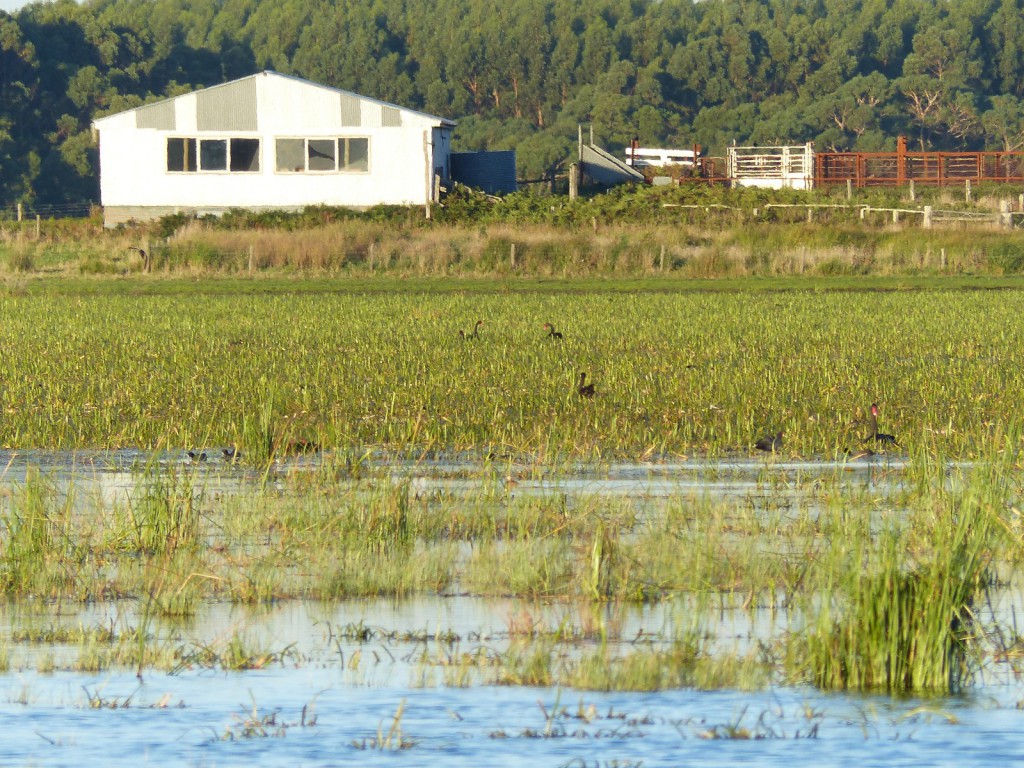
A recent view of Mt Burr Swamp from the new western fenceline – looking east towards the shearing shed.
Also as discussed in this previous update, or if you have been out on site over recent months and seen cows in the swamp, you’ll be aware that the wider Mt Burr Swamp property is still a functioning farm, and the process of restoration is going to be long and gradual as we isolate areas of the property, one by one, to be restored (re-instating the swamps) and/or revegetated. We’d been waiting for the summer heat to pass and water levels to drop enough to enable us to enclose the previously unfenced western side of the swamp and allow Mt Burr Swamp (and a buffer zone around it) to become our first active restoration site on the property to have grazing excluded.
Which leads me to the good news, which is that thanks to the efforts of a group of NGT staff and some of our finest volunteers, Mt Burr Swamp is now free of livestock grazing for the first time in over 60 years! A huge thanks to the following volunteers: Neil and Helen Ellison for knocking in the posts, and Andy Lines, Roger Black and Fred Aslin (L-R in image below), along with NGT’s Bryan Haywood and Jonathan Tuck, for setting up the wires.
What a great team effort!
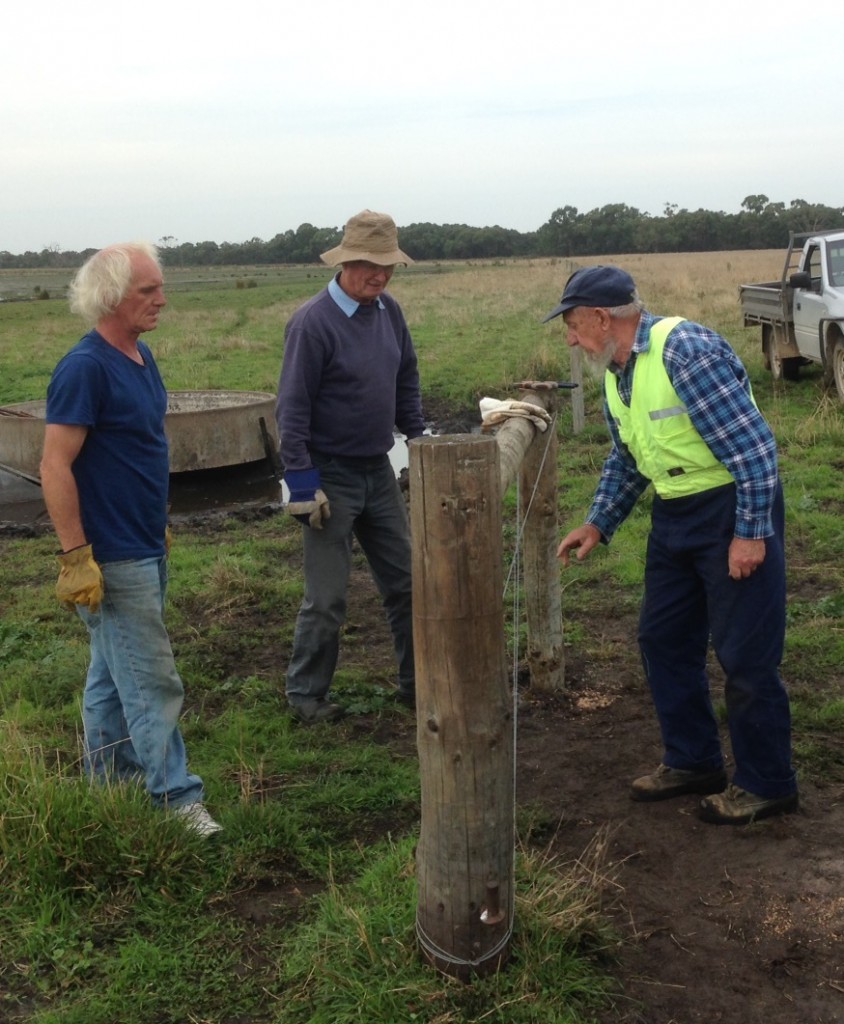
Part of the dedicated Mt Burr Swamp volunteer fencing crew – Andy Lines, Roger Black and Fred Aslin.
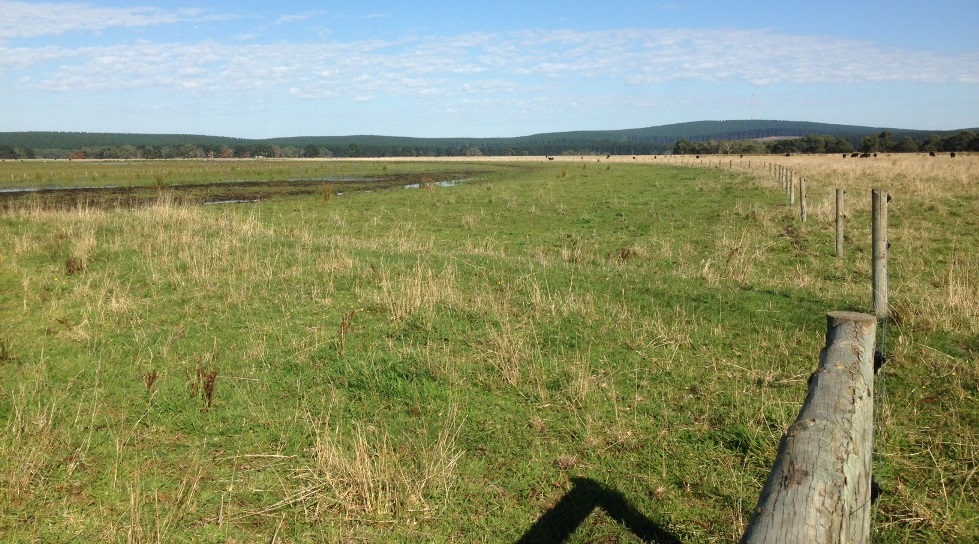
The newly-erected electric fence at Mt Burr Swamp, enclosing the previously open western side of the wetland and excluding stock for the first time in over 60 years.
NGT especially thanks all project donors and the following major partners for their support:



